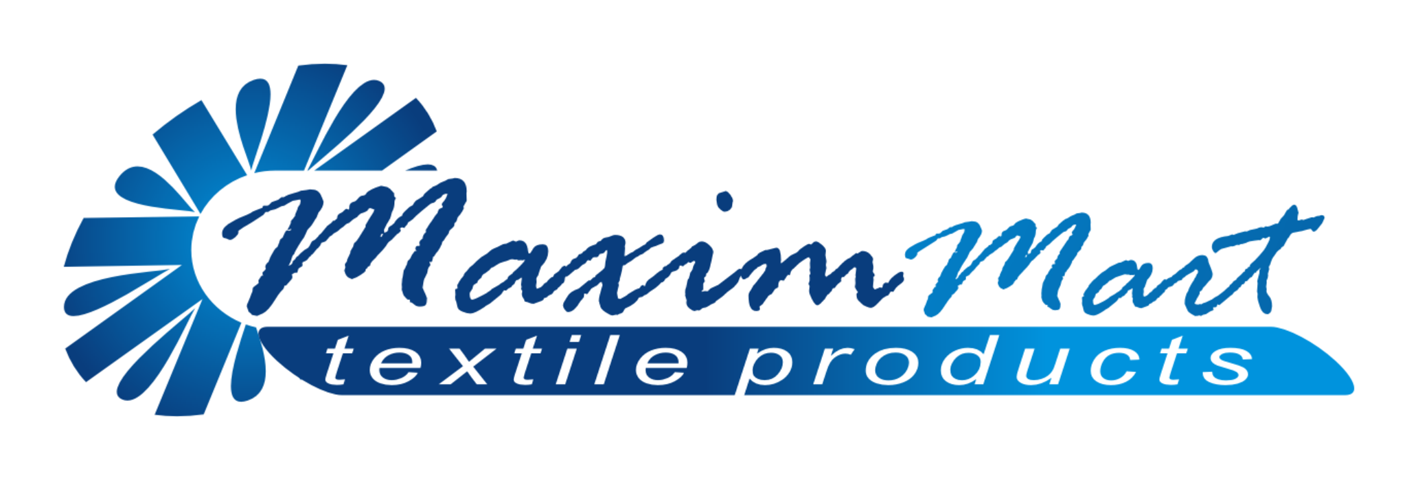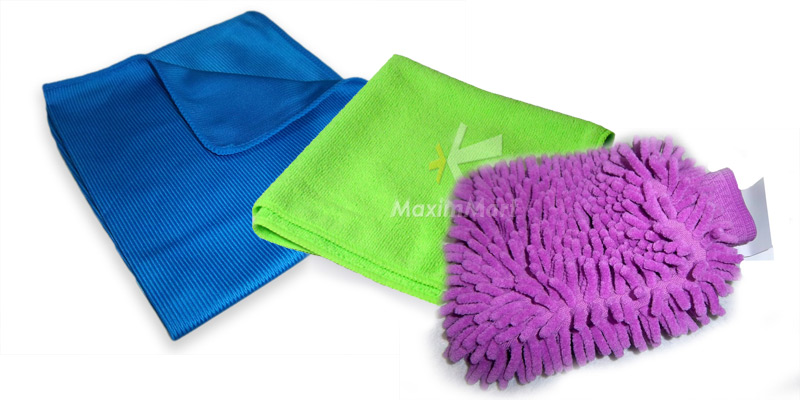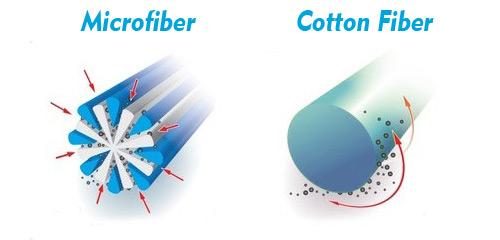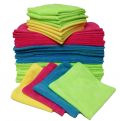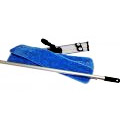What is microfiber?
Microfiber cloth, or more simply microfiber, is the synthetic fabric of the future. Each microfiber product consists of microscopic strands that are interwoven into a fabric to fulfill certain characteristics depending on what the given product will be used for. The most common microfiber products are made from polyesters, polyamides, or a conjunction of polyester, polyamide and polypropylene.
Combining these materials allows them to acquire a unique star shape during the manufacturing process which makes them superior to other textile alternatives. The following information will inform you on why microfiber is the product to use and how to care for it.
What is Microfiber?
Microfiber is a synthetic man-made fiber that is finer than 1.3 denier or decitex/thread. In more simple terms, microfiber is 1/100th the diameter of a human hair and 1/20th the diameter of a strand of silk! It is said by Ira Sutton, The National Marketing Director for Edge Tech Industries, that the fibers are so tiny that “if you took a 16x16 microfiber towel and laid the fibers from end to end, it would reach from Miami Beach to Anchorage.” That’s 4,750 miles! Microfiber is used to make several products amongst different industries including but not limited to: cleaning products, mats, knits, weaves, apparel, upholstery, and industrial filters. Emerging technology has created the possibility to use combinations of different synthetic fibers to be able to tailor the products for specific characteristics including softness, toughness, absorption, water repellency, electrodynamics, and filtering capabilities.
Microfiber History
The history of microfiber began way back in the later 1950’s. It was at this time that technology had allowed for the process of extruding polyamide. This allowed for the microfiber to take on its form with a fixed cross-sectional profile. The process however was not truly accredited until the late 1960’s; where they were able begin perfecting the process to have a practical use for it.
It is documented that two Japanese scientists (Miyoshi Okamoto and Toyohiko Hikota) had undertaken promising experiments that could create production of continuous ultra-thin fibers. Following this amazing new discovery several individuals found applications among various industries. Prompting the release of the “Ultra-Suede Fabric” in the early 1970’s, the first successful microfiber to hit the market.
The evolution of microfibers sky rocketed from this point and experimentation led several different scientists to create many different alternatives to the Ultra-Suede. Microfiber was then first introduced into the European Market through Sweden in the very early 1990’s. The super absorbent materials began to take Europe by storm, and within ten years microfiber were a commonly known product throughout Europe and The United States.
Microfiber is now one of the largest parts of the multi-billion dollar textile industry.
Benefits of Microfiber:
- Ultra Fine- Finer than the most delicate silks.
- Luxurious- Very soft like silk or suede.
- Washable- May be dry cleaned or washed up to 500 times.
- High strength- Shrink resistant if properly cared for.
- Comfortable- Offers insulation and breathability.
- High Water Absorption- Able to absorb up to 25 times its weight.
- Strong Decontamination Ability.
- No Fading in Color- Looks like new after several washes.
- Several Colors Available- Helps prevent cross-contamination.
- No Shedding- Product will stay intact for extended periods of time.
- Easy to Clean- Can be dry cleaned or cleaned in a standard washing machine.
- Cleanliness- Leaves no dust particles, fibers, or debris behind.
- Environmentally Friendly- When using microfiber, the use of chemical cleaners is minimized.
Other Benefits of Continued Use Microfiber
Caring for Microfiber Fabrics



It is very important to follow the recommended care techniques for the microfibers to ensure their sustainability.
- Microfiber products need to be washed at a low temperature (No higher than 60 degrees)
- Do not use bleach or anything with bleach in it.
- Do not wash them with cotton or terry towels. They may be washed with other fabrics, but are best washed with other microfibers to maintain positive electronic charge for longer.
- Fabric softener can be used in a low quantity, but is not recommended. The chemical components in fabric softener clog the microfibers, making them less effective.
- Always use the “gentle” wash setting.
- It is recommended that microfiber towels be air-dried at room temperature. Since they are breathable they will dry rather quickly. However, if this is not possible, we recommend drying them on low heat.
- Do not use static sheets. This will cause the microfiber to lose its electromagnetic charge.
- Do not iron. Majority of microfibers contain at least some polyester.
- Never boil clean your towels. This will destroy their physical properties, and you cannot return them to form.
If these simple steps can be followed, your microfibers can last you for years without losing their unique abilities.
